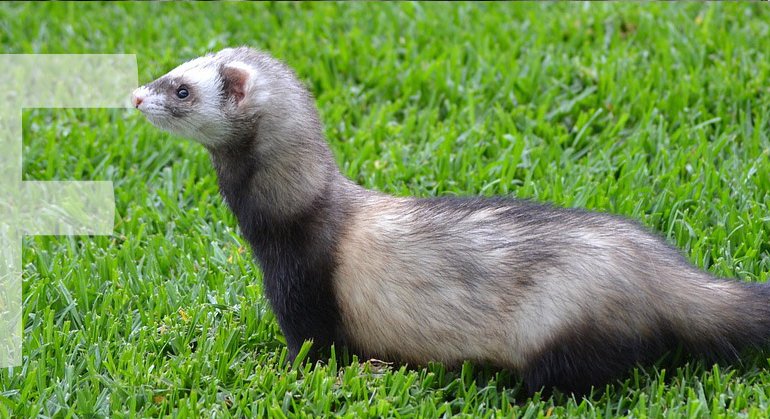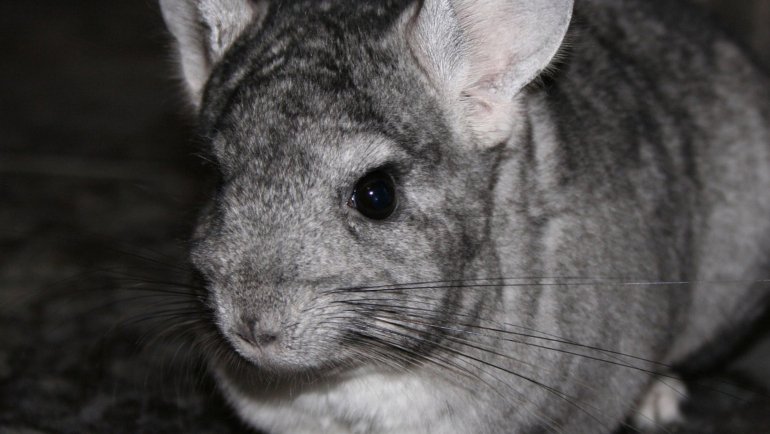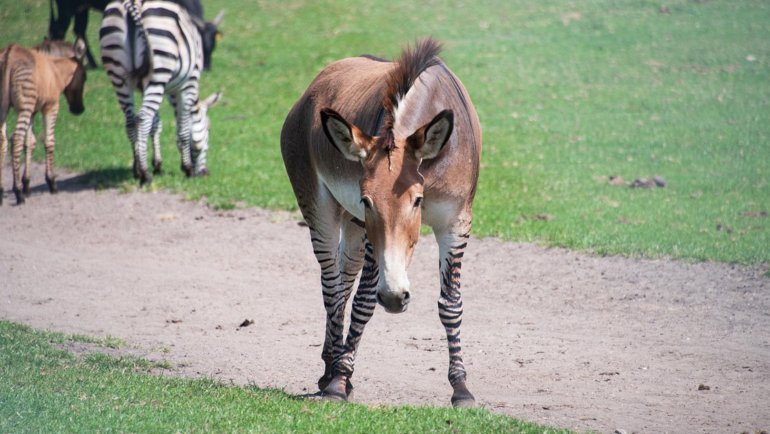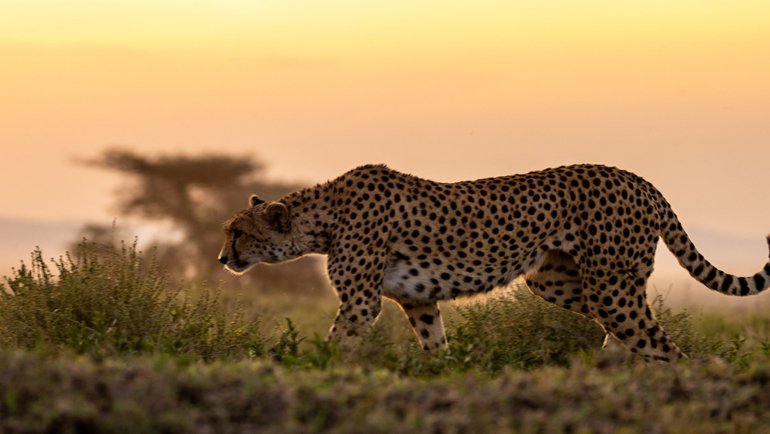The study of animal anatomy offers invaluable insights into their biology, behavior, and conservation. Among the diverse anatomical features of wildlife, reproductive anatomy holds particular significance due to its role in species continuation and ecological balance.
This article focuses on the zebra, specifically exploring the physical characteristics of the zebra’s reproductive anatomy. Understanding these aspects is not only fascinating from a biological standpoint but also crucial for conservation efforts and managing zebra populations effectively.
Anatomical Overview of Zebras
Zebras, belonging to the family Equidae, share many anatomical similarities with their relatives – horses and donkeys. However, zebras are distinguished by their unique black and white striped coats, a feature that has intrigued scientists and enthusiasts alike.
Beyond their striking appearance, zebras possess a robust body structure, adapted for survival in their native African habitats. Their anatomy is suited to a lifestyle that requires endurance, agility, and social interaction.
Comparing zebra anatomy with that of other equids reveals not only these distinctive physical traits but also sheds light on evolutionary adaptations within the Equidae family.
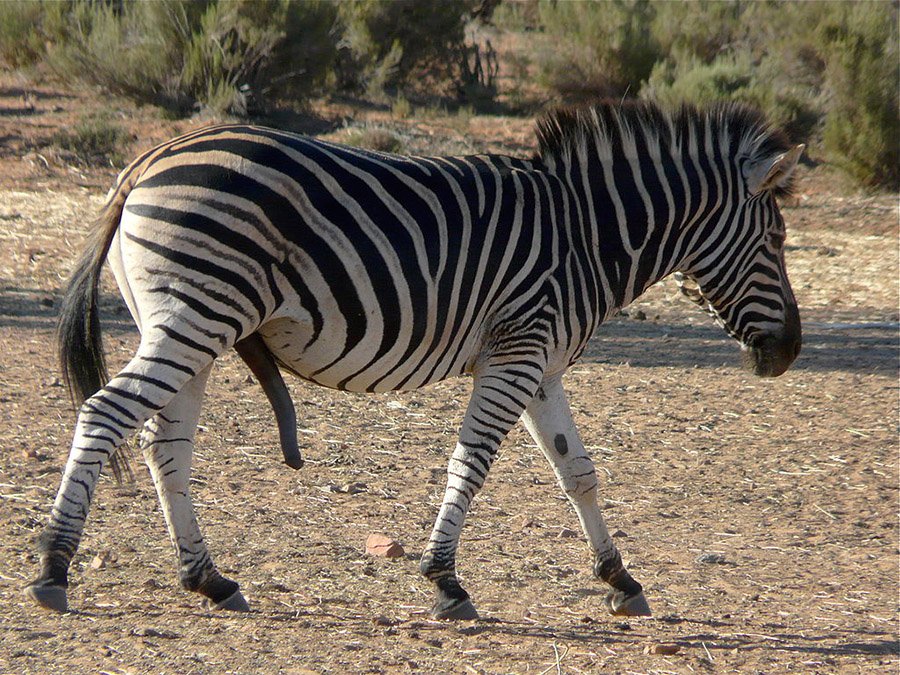 Source: Wikimedia Commons
Source: Wikimedia CommonsPhysical Characteristics and Size of the Zebra Penis
The reproductive anatomy of zebras, particularly the male zebra’s penis, is a topic of interest due to its size and function. In terms of size, the zebra penis is notable for being the longest among the horse family.
An erect zebra penis can measure up to a foot and a half in length. This substantial size is consistent with the general body size and proportions of zebras, aligning with the reproductive needs of the species.
From a scientific perspective, the size of the zebra penis is important for understanding their mating behaviors and reproductive strategies. It plays a crucial role in the zebra’s reproductive process, which is essential for the continuation of the species.
This anatomical feature, while perhaps striking in its dimensions, is a natural aspect of zebra biology and contributes to our broader understanding of equine anatomy and reproductive physiology.
What Color is a Zebra’s Penis?
Contrary to what one might expect given the distinctive striped coat of zebras, the penis of a zebra does not feature the same black and white striping.
The coloration of a zebra’s penis is more consistent with the general coloration of mammalian reproductive organs, typically ranging from light to darker flesh tones. Most of the time, it is dark gray in color.
This lack of stripes on the zebra’s penis is an interesting deviation from their otherwise uniformly striped bodies and can be attributed to the different functions and evolutionary pressures on skin versus reproductive organs.
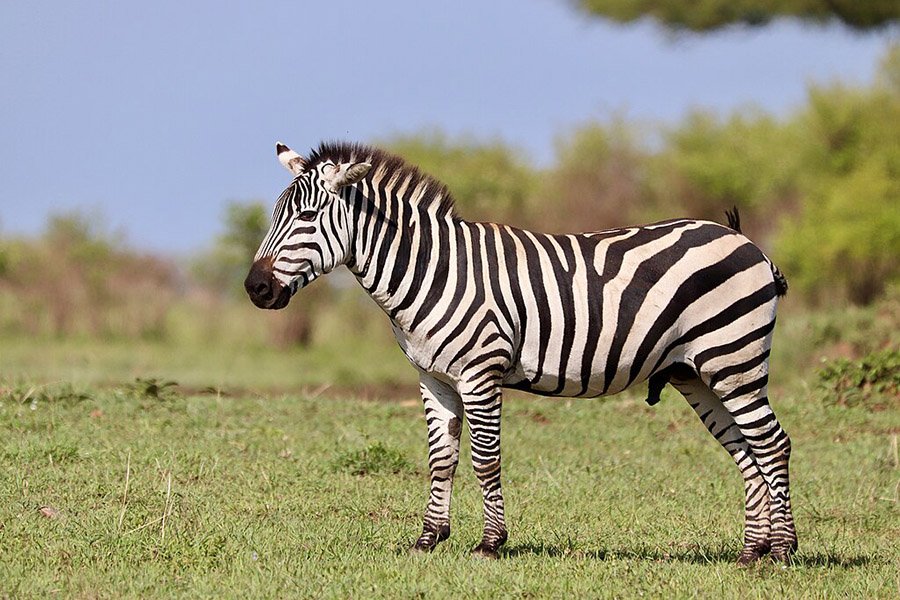 Source: Wikimedia Commons
Source: Wikimedia CommonsBiological Function and Reproductive Role
The primary biological function of the zebra’s penis is reproduction. Its size, as previously mentioned, is adapted to the physical demands of mating in the wild. During mating, the male zebra’s penis plays a crucial role in delivering sperm to the female reproductive tract, a process vital for fertilization and the continuation of the species.
Mating behaviors in zebras are influenced by various factors, including social hierarchy, territory, and availability of mates. Male zebras often engage in competitive behaviors to attract females and establish dominance, which can include displays of physical strength and stamina.
The anatomy of the zebra, including the size and function of the reproductive organs, is integral to these behaviors and to successful mating and reproduction within the species.
Comparing Zebras to Other Related Animals
When compared to other members of the Equidae family, such as horses and donkeys, zebras share many similarities in their reproductive anatomy.
However, the notable difference is in the size of the penis, with zebras having a longer penis relative to their body size compared to horses and donkeys. This difference can be attributed to specific evolutionary adaptations that each species has undergone to suit their unique mating strategies and environments.
In terms of broader comparative anatomy, the reproductive organs of equids are generally similar in function and overall structure to those of other mammalian species, though size and shape may vary significantly. These variations reflect the diversity of mating systems, environmental adaptations, and evolutionary histories across different species.
By understanding the comparative anatomy of zebras and other equids, we gain insights into the evolutionary processes that shape reproductive strategies and the physical traits associated with them. This knowledge is not only fascinating from a biological perspective but also crucial for effective wildlife management and conservation strategies.
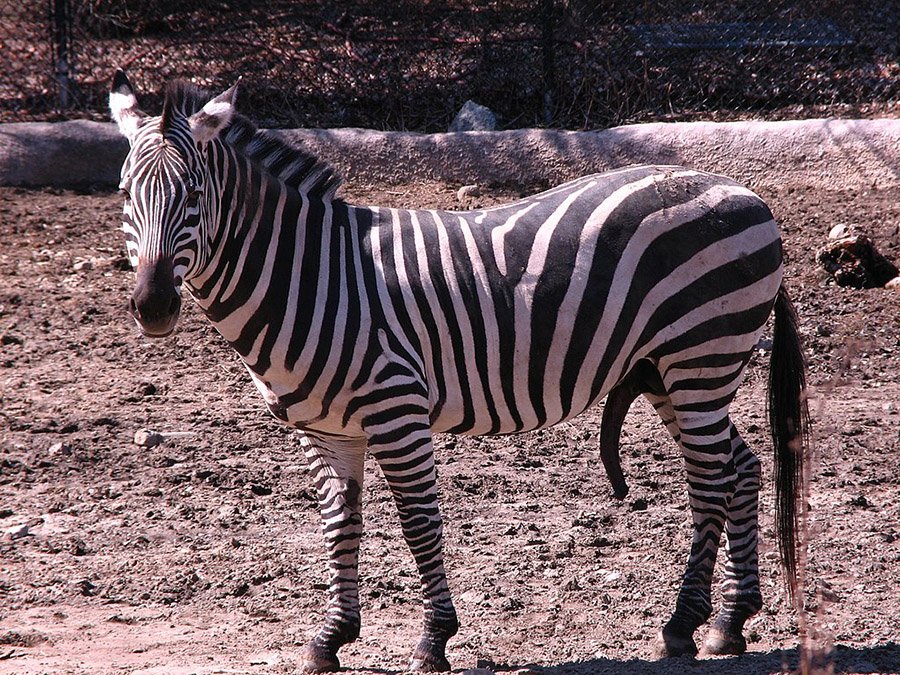 Source: Wikimedia Commons
Source: Wikimedia CommonsRole in Zebra Health and Population Management
The reproductive health of zebras, including the health of their reproductive organs, plays a pivotal role in population management and conservation efforts.
Healthy reproductive systems are essential for the continuation of zebra species, ensuring successful mating and the birth of offspring. In the wild, issues such as diseases, injuries, or congenital defects that affect the reproductive organs can significantly impact population dynamics.
In conservation and wildlife management, monitoring the reproductive health of zebras is a key aspect. This includes ensuring healthy genetic diversity within populations, managing breeding programs in reserves or sanctuaries, and sometimes intervening in cases of health issues that could affect reproduction.
Challenges in this aspect of wildlife health management include limited access to wild populations for monitoring, the impact of environmental changes on reproductive health, and the complexities of managing genetic diversity in smaller, isolated populations.
Frequently Asked Questions
Do zebras mate for life?
No, zebras do not mate for life. They have a polygamous mating system, where dominant males mate with multiple females.
How often do zebras reproduce?
Female zebras can give birth to one foal approximately every two to three years after a gestation period of about 12 to 13 months.
At what age do zebras reach sexual maturity?
Female zebras typically reach sexual maturity around 2 to 3 years of age, while males become sexually mature around 3 to 6 years of age.
Can zebras crossbreed with horses or donkeys?
While zebras can physically mate with other members of the Equidae family, such as horses and donkeys, resulting offspring (like zebroids or zonkeys) are usually infertile due to genetic differences.
Are there any conservation programs specifically focused on zebra reproduction?
Yes, there are conservation programs that focus on maintaining healthy zebra populations, which include monitoring and supporting their reproductive health. These programs often involve habitat conservation, anti-poaching efforts, and, in some cases, controlled breeding programs in reserves or sanctuaries.
